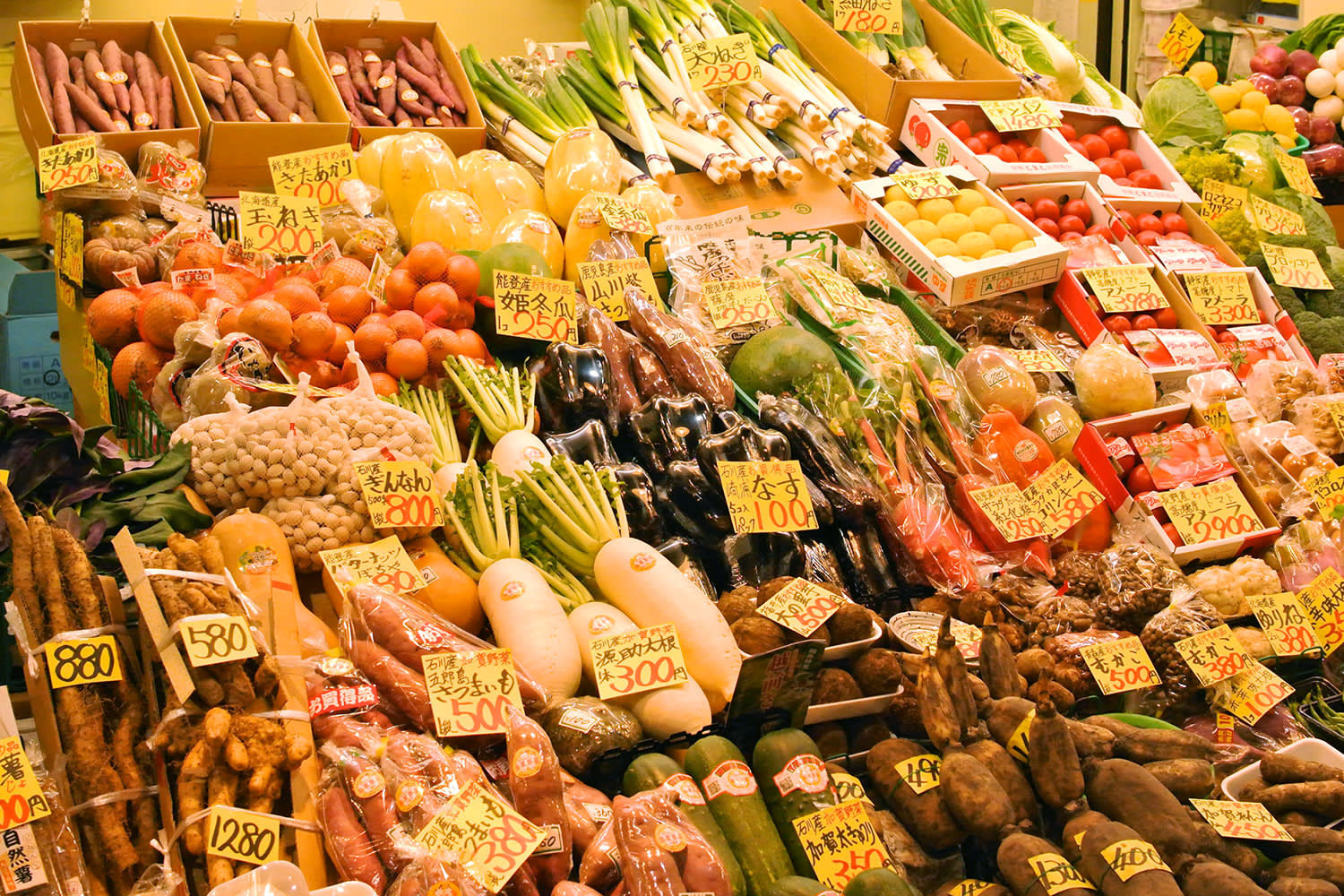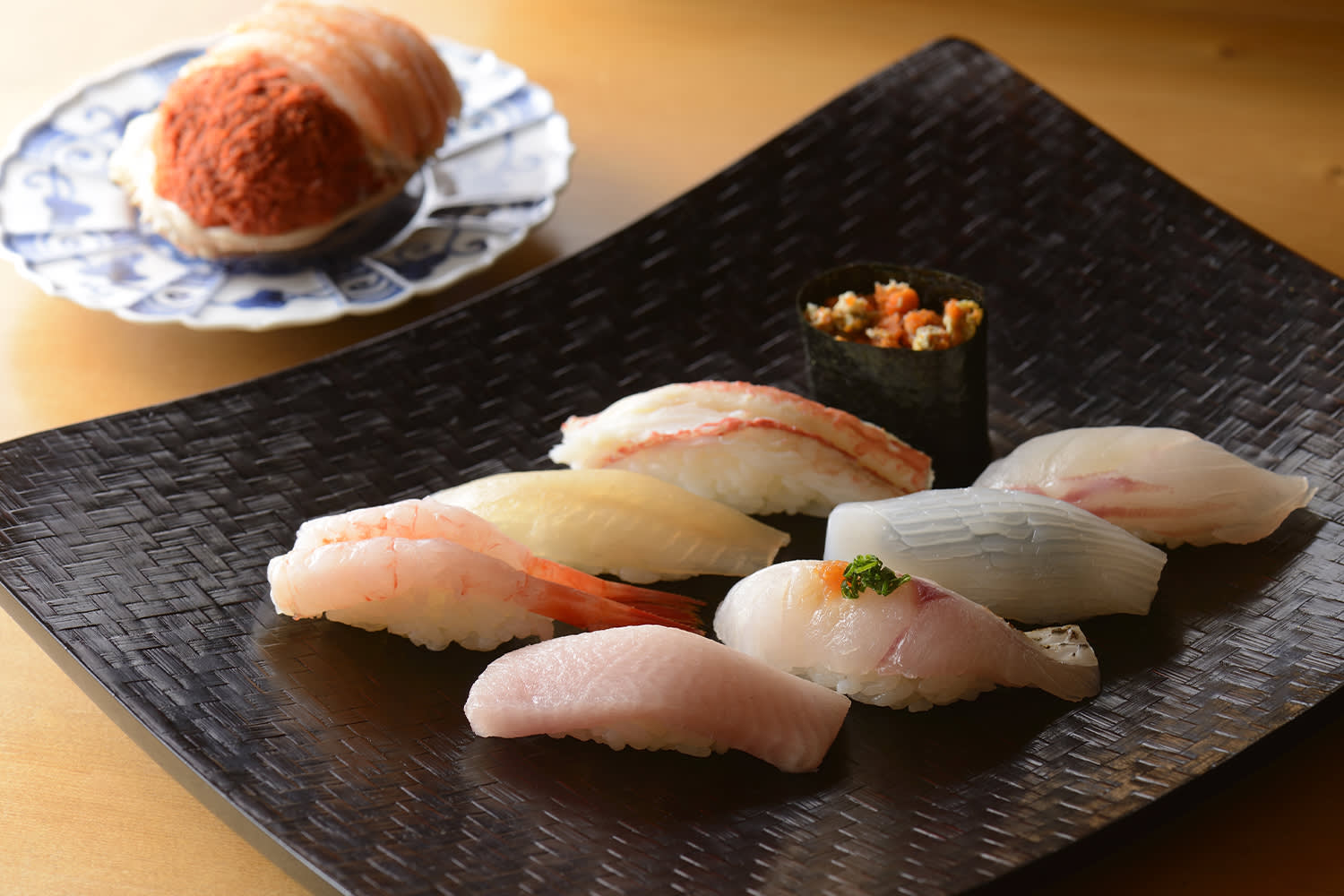Ishikawa has an abundance of fresh seafood. The quality and diversity of the area’s catch is due to its position at an intersection of warm and cold currents that flow along the coast of the Sea of Japan. Snow crab (zuwaigani), sweet shrimp (amaebi), and amberjack (buri) are among the prefecture’s most famous winter catches. Other local seafood delicacies include squid (ika), oysters (kaki), sea bream (tai), pufferfish (fugu), and blackthroat seaperch (nodoguro). Try fresh sushi, sweet, succulent crab dishes and salt-grilled nodoguro.
Vegetables from the Noto and Kaga areas feature widely in local dishes. They include sweet potatoes, radishes and lotus root, as well as Okinawan spinach (kinjiso), Japanese parsley (seri), and cucumbers.
Noto beef is sought after for its delicate flavor and melt-in-the mouth texture. Only Ishikawa-bred Japanese black wagyu cattle can be called Noto beef, and the cattle are raised in limited numbers with a high-calorie diet and stress-free environment.
Salt is produced near the tip of the Noto Peninsula, an area that historically provided all the salt used in the Kaga domain. Visitors to these farms can see traditional salt-production methods and try parts of the process.
Kombu kelp, used throughout Japan in dashi stock and in Ishikawa to wrap sashimi and kamaboko fish cakes, was among the ingredients that came to the area via kitamaebune trading vessels. These ships brought goods to ports along the Sea of Japan coast.














